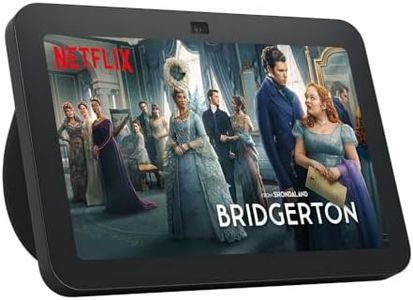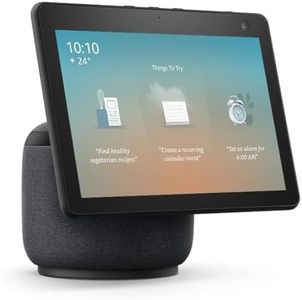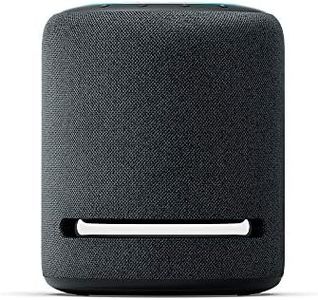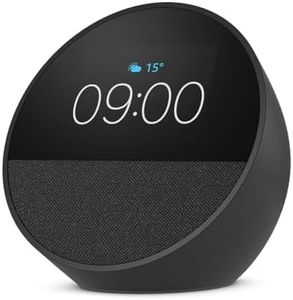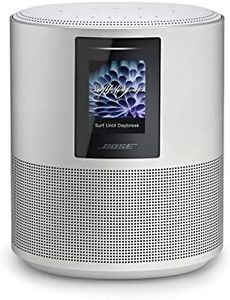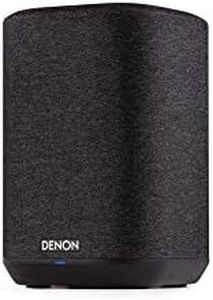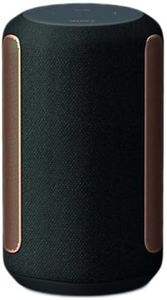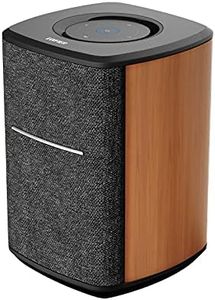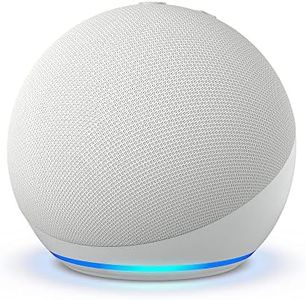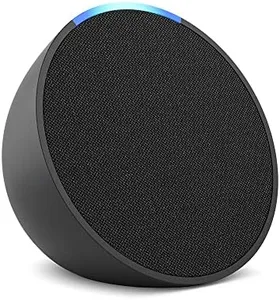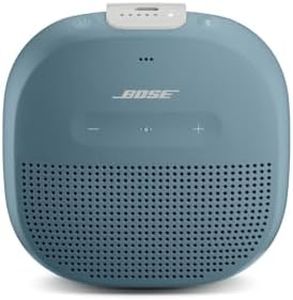We Use CookiesWe use cookies to enhance the security, performance,
functionality and for analytical and promotional activities. By continuing to browse this site you
are agreeing to our privacy policy
10 Best Smart Speakers
From leading brands and best sellers available on the web.Buying Guide for the Best Smart Speakers
Smart speakers are voice-activated devices that can play music, answer questions, control smart home devices, and more. Choosing the right smart speaker means finding one that fits your lifestyle, your home environment, and the tasks you want it to perform. Before you buy, think about where you'll use it, how often you'll interact with it, and which features matter most to you. Understanding key specifications will make it easier to select a speaker that feels like the best fit.Voice Assistant CompatibilityVoice assistant compatibility refers to which virtual assistant is built into the smart speaker, such as Google Assistant, Amazon Alexa, or Apple Siri. This spec is important because the assistant determines how you talk to your speaker, what services it integrates with, and what devices it can control. Generally, if you already use other smart devices or services from Google, Amazon, or Apple, choosing a speaker with the matching assistant will create a smoother experience. If you want a speaker that can handle a wide range of smart home tasks or support certain music services, check that the assistant works with the services and brands you prefer.
Audio QualityAudio quality describes how good the speaker sounds when playing music, podcasts, or any audio. This matters if you plan to use the speaker for entertainment or want clear voice responses. Audio quality ranges from basic to high-fidelity. Small, budget-friendly speakers may have decent clarity but less bass and fullness, suitable for voice commands and background music. Mid-range models often deliver balanced sound for most homes and casual listening. Larger or more premium models boost deeper bass, richer details, and room-filling sound—best if you're an audiophile or use the speaker in big spaces. Choose based on your listening habits and the room size where you'll use the speaker most.
Microphone PerformanceMicrophone performance means how well the speaker can hear your voice commands, even if there's noise or you're far away. This is critical for the convenience of hands-free control. Basic smart speakers usually have a single or dual microphone setup; they're best in quieter rooms and with close-range commands. Advanced speakers feature multi-microphone arrays and noise-canceling technology, enabling them to pick up your voice accurately from across a room or while music is playing. If you expect to use your smart speaker in busy or large rooms, or from across a distance, pay attention to speakers with stronger microphone performance.
Smart Home IntegrationSmart home integration tells you how well the speaker can interact with smart lights, thermostats, locks, cameras, and other connected gadgets. If your home has—or might have—various smart devices, picking a smart speaker that supports a wide range of brands and types of devices is wise. Some speakers work best with certain ecosystems (like Alexa with Amazon-compatible devices, or Google Assistant with Nest). Decide which smart home devices you want to control and make sure the speaker can connect with them reliably. If you only plan to use basic voice commands or music, this may be less important.
Portability and DesignPortability and design refer to the size, weight, and look of the smart speaker, as well as whether it is battery-powered or needs to be plugged in. Portable speakers with battery power are great for carrying around the house or even outside, while stationary speakers are better suited to permanent spots like a living room or kitchen counter. Design also matters for how the device fits in with your home decor—some are sleek and minimal, others are more colorful or bold. When choosing, think about where you want to place your speaker and whether you’ll need to move it regularly.
Privacy FeaturesPrivacy features relate to how your voice data is handled and what controls you have over the microphone and recordings. Some speakers offer hardware mute switches, indicator lights, or allow you to manage or delete voice recordings. If privacy is important to you, look for speakers that make it easy to disable listening when you don’t need it and that provide clear information about how your data is used. This spec is important if you’re concerned about always-on listening or want to control who can interact with the smart speaker.
Connectivity OptionsConnectivity options cover how the speaker links with your devices and the internet—typically Wi-Fi, but sometimes Bluetooth or auxiliary inputs, too. Most smart features require Wi-Fi, but if you want to use the speaker solely for music streaming from your phone, Bluetooth support is handy. If you want to connect to other audio equipment, check for wired input or output options. Consider how you plan to use your speaker most—music streaming, smart controls, audio grouping with other speakers, and ensure it has the right connectivity for your setup.
